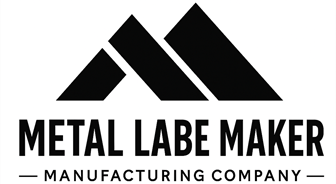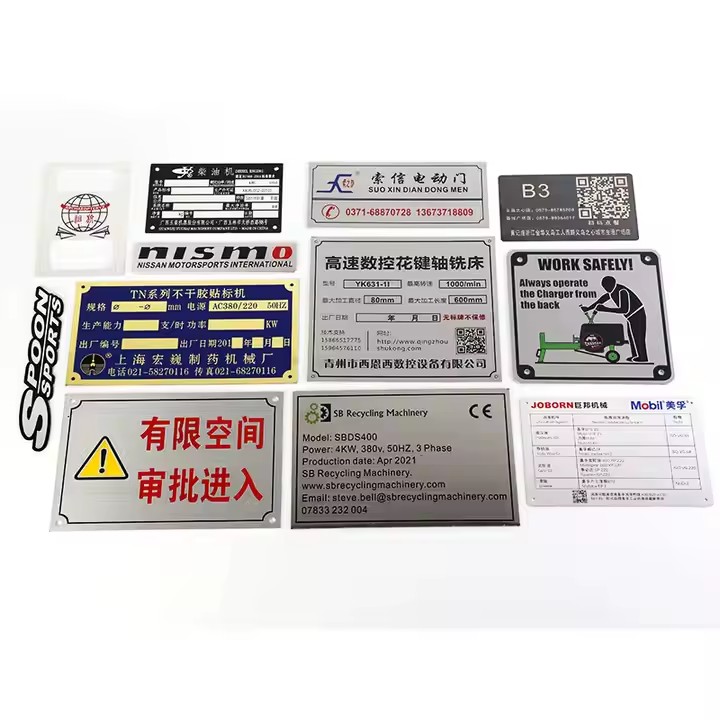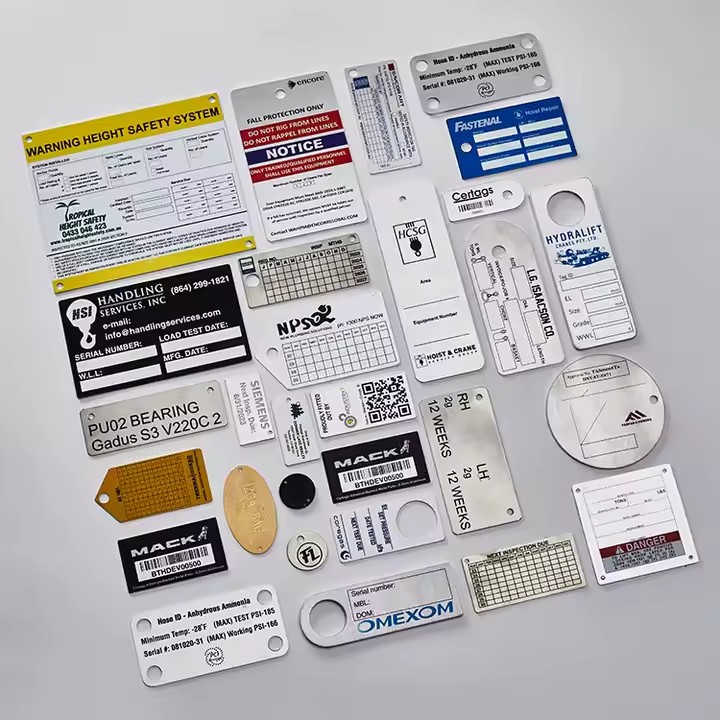Applications and Design Tips for Stainless Steel Labels in Electronics
In the fast-evolving world of electronics, precision, traceability, and durability are non-negotiable. Whether labeling circuit boards, control panels, or electronic enclosures, stainless steel labels provide a long-lasting, professional solution that meets stringent industry requirements.
This article covers the common applications of stainless steel labels in electronics and shares expert design tips to ensure your labels meet performance, compliance, and branding needs.
1. Why Use Stainless Steel Labels in Electronics?
Electronics manufacturers choose stainless steel labels for several key reasons:
-
Durability: Resistant to heat, chemicals, and abrasion
-
High legibility: Precision marking for small components
-
Compliance: Supports regulatory labeling (RoHS, CE, UL, FCC)
-
Traceability: Enables barcode and QR code tracking
-
Space efficiency: Thin profile, but highly readable
These features make stainless steel ideal for both consumer electronics and industrial electronic systems.
2. Key Applications in the Electronics Industry
a. PCB and Component Identification
-
Labeling of printed circuit boards (PCBs) with serial numbers or part IDs
-
Withstands high-temperature soldering and cleaning processes
b. Equipment & Panel Labels
-
For control panels, server racks, or machine interfaces
-
Durable under constant use, heat, and vibration
c. Asset Tags and Inventory Labels
-
Permanent asset tracking for electronic equipment
-
Ideal for labs, production facilities, and IT infrastructure
d. Regulatory and Certification Labels
-
Marks for UL, CE, FCC, and RoHS compliance
-
Ensure legal, safe, and market-ready electronic devices
e. Data Center and Networking Gear
-
Label servers, routers, cables, and power modules
-
Withstand cooling systems, dust, and frequent handling
3. Design Tips for Effective Stainless Steel Electronic Labels
1. Use Laser Engraving or Etching
-
For small text and QR codes, laser engraving ensures precision
-
Avoid screen printing unless coated or laminated (less durable)
2. Choose the Right Steel Grade
-
304 stainless steel for general electronics and indoor use
-
316 stainless steel for harsh or corrosive environments
3. Keep Label Size Compact but Readable
-
Electronics labels are often small—optimize font choice and spacing
-
Use condensed sans-serif fonts for clarity
4. Add Data Matrix or QR Codes
-
Enables smart inventory and maintenance tracking
-
Make sure codes are etched with enough contrast for scanners
5. Surface Finish Matters
-
Brushed or matte finish minimizes glare
-
Polished finishes offer premium aesthetics for consumer electronics
6. Use Adhesive Backing When Screws Are Not Viable
-
3M industrial adhesives provide strong, clean mounting
-
Useful for circuit housings or enclosures where drilling isn’t an option
4. Regulatory Considerations
In electronics manufacturing, labeling often needs to meet:
-
UL 969 label durability standards
-
IEC/EN safety marking requirements
-
RoHS/REACH environmental directives
Stainless steel labels can be designed to meet these with proper documentation, ink/coating selection, and data encoding.
5. Case Examples
| Application | Label Type | Special Features |
|---|---|---|
| High-end amplifier units | Logo plate | Polished finish, etched branding |
| Data center servers | Barcode ID tags | Laser-engraved, adhesive-backed |
| Automotive electronics | Serial & batch codes | Heat- and oil-resistant 316SS |
| Telecom junction boxes | CE & safety markings | Compact, weatherproof design |
| Industrial controls | Interface labels | Engraved graphics + mounting holes |
Conclusion
Stainless steel labels are an excellent choice for the electronics industry, offering durability, precision, and regulatory compliance. With the right design choices—from material grade to marking method—your electronic labeling can enhance traceability, support automation, and project a high-quality brand image.
Whether you manufacture consumer electronics, network systems, or industrial controls, custom stainless steel labels provide a long-term identification solution that performs under pressure.







